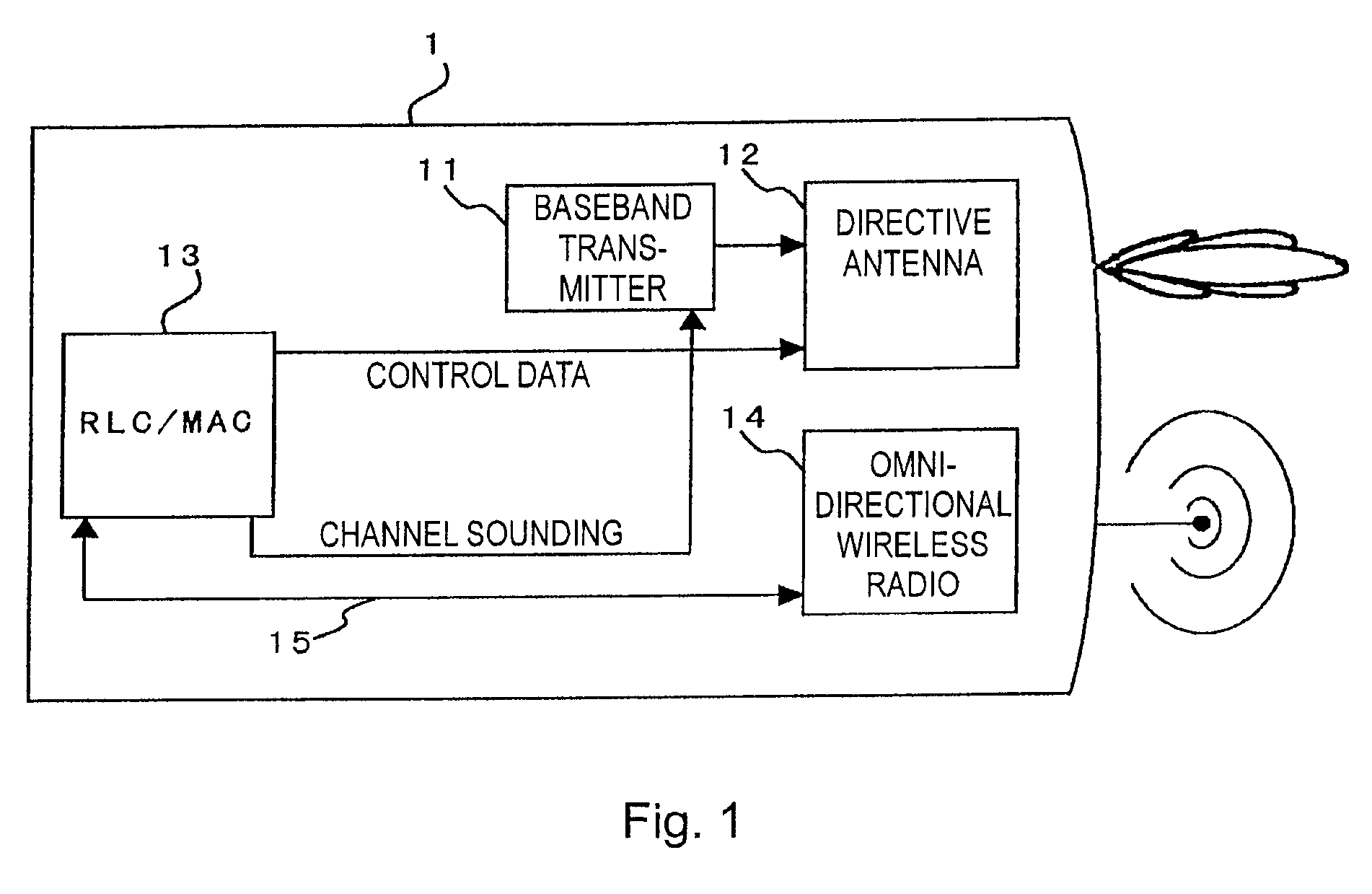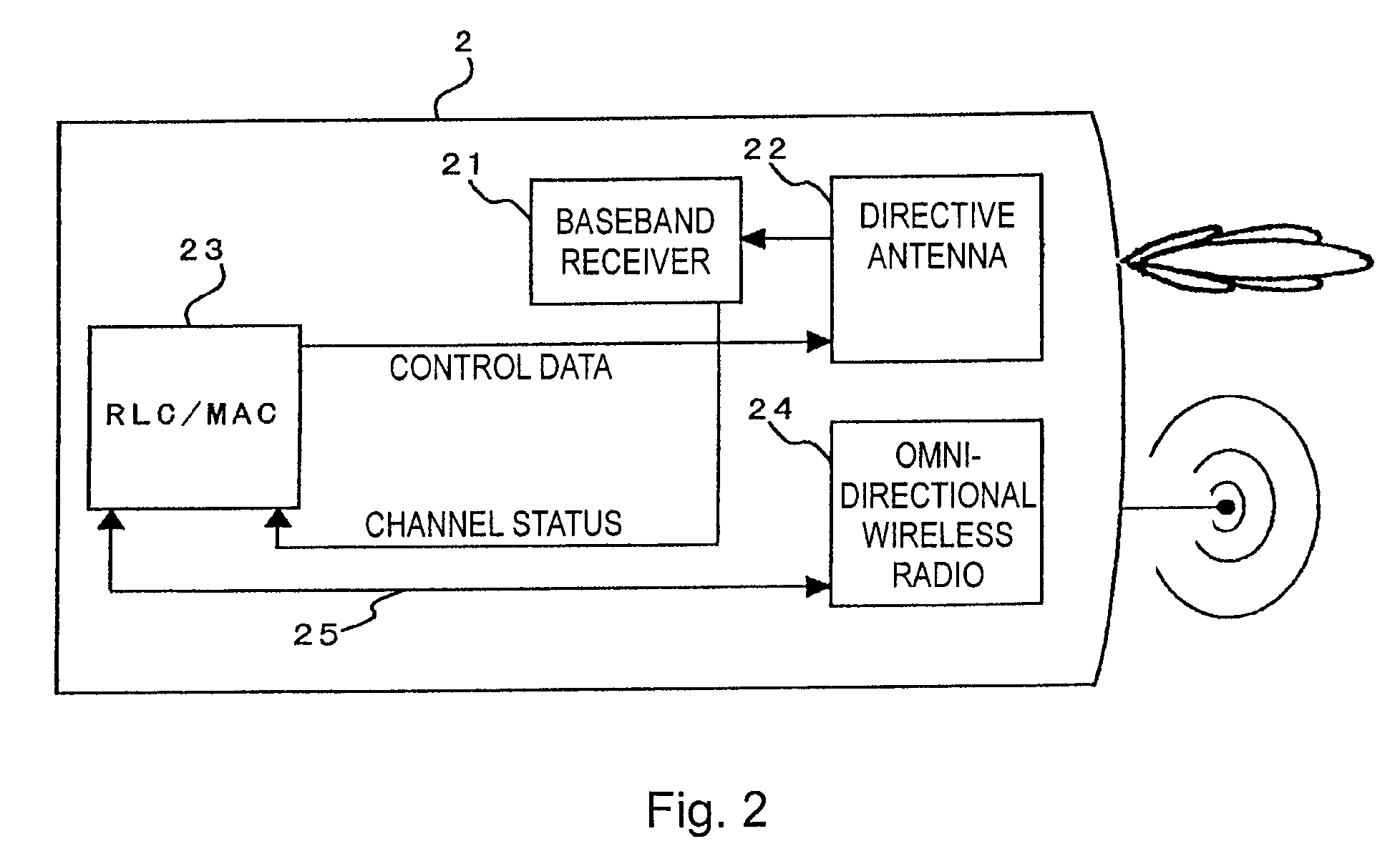Out-of-band radio link protocol and network architecture for a wireless network composed of wireless terminals with millimetre wave frequency range radio units
a technology of wireless terminals and network architecture, applied in the field of telecommunications, can solve problems such as limiting the operation range, blocking the transmission of content sources, and definition content streaming applications which are very sensitive to delays
- Summary
- Abstract
- Description
- Claims
- Application Information
AI Technical Summary
Benefits of technology
Problems solved by technology
Method used
Image
Examples
Embodiment Construction
[0034]In the following description, the present invention is explained in more detail in relation to the enclosed drawings in which
[0035]FIG. 1 shows a wireless transmitter terminal with a directional and an omnidirectional antenna.
[0036]FIG. 2 shows a wireless receiver terminal with a directional and an omnidirectional antenna.
[0037]FIG. 3 shows a wireless relay with a first and a second directional and an omnidirectional antenna.
[0038]FIG. 4 shows the process of selecting a useful beam combination between two embodiments of a wireless transmitter terminal and a wireless receiver terminal.
[0039]FIG. 5 shows the process of beam tracking.
[0040]FIG. 6 shows the process of sounding data transmission channels.
[0041]FIG. 7 shows the process of collaborative beam selection.
[0042]FIG. 8 shows a transmission scenario in a home network environment.
[0043]It is to be understood that only elements important for the understanding of the present invention are shown in the drawings. Further elemen...
PUM
 Login to View More
Login to View More Abstract
Description
Claims
Application Information
 Login to View More
Login to View More - R&D
- Intellectual Property
- Life Sciences
- Materials
- Tech Scout
- Unparalleled Data Quality
- Higher Quality Content
- 60% Fewer Hallucinations
Browse by: Latest US Patents, China's latest patents, Technical Efficacy Thesaurus, Application Domain, Technology Topic, Popular Technical Reports.
© 2025 PatSnap. All rights reserved.Legal|Privacy policy|Modern Slavery Act Transparency Statement|Sitemap|About US| Contact US: help@patsnap.com



